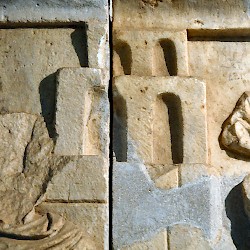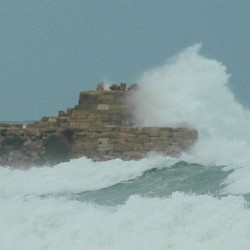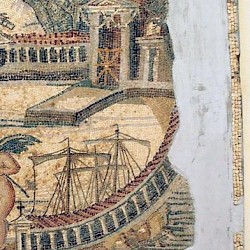Lepcis Magna, Port
Lepcis Magna: Phoenician colony, later part of the Carthaginian empire, the kingdom of Massinissa, and the Roman empire. Its most famous son was the emperor Septimius Severus (r.193-211).
Port
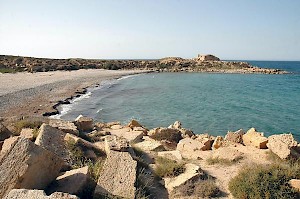
The artificial port of Lepcis Magna was situated to the southeast of the old city center. It is between a northern mole that runs more or less east-west (in the background of the first photo) and an eastern pier that protects the harbor against storm wind from that direction (foreground). Between them, the Wadi Lebda empties itself into the Mediterranean Sea. The area between the two piers is a little under 350 x 350 meters.
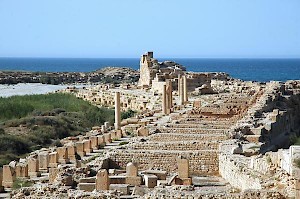
On the second photo we can see the eastern pier, you must imagine the part to left as water (like this). The port was built in several stages: during the reign of Nero (r.54-68), several buildings were erected in the northwestern part, where the northern pier was built to connect a small island to the city itself. This protected the port against the prevailing northern winds.
The quay of the eastern pier, with many stone mooring blocks, was built by the architects of Septimius Severus (r.193-211), the emperor from Lepcis. Because wadis are irregular, and can become dangerously violent streams in the winter, the Wadi Lebda was blocked by a dam, and the wadi got another outlet. After Antiquity, the dam collapsed and the area between the two piers was silted up.
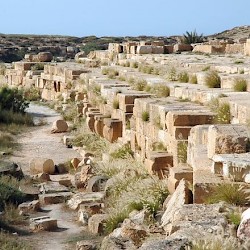 Lepcis Magna, Port, eastern pier, quay |
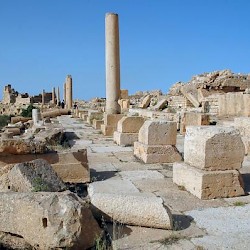 Lepcis Magna, Port, eastern pier, street |
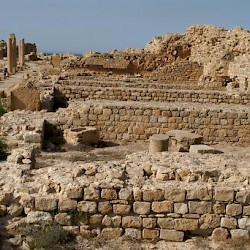 Lepcis Magna, Port, eastern pier, store houses |
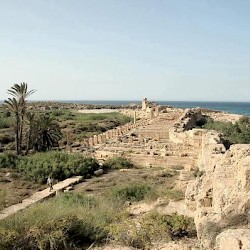 Lepcis Magna, Port, eastern pier |

The buildings on the eastern pier, warehouses and shops, must have had at least two levels: after all, there was a colonnade and there were stairs, which must have supported a higher floor. Being at least ten meters high, the eastern mole offered much protection.
It was included in the line of fortifications that was built by the Byzantine general Belisarius after he had taken Lepcis Magna from the Vandals, who had occupied the city from 455 until 533/4.
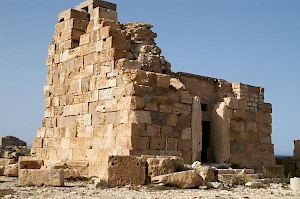
At the end of the eastern pier, a tower was erected that was probably used to give signals to approaching ships. Opposite this tower, on the easternmost part of the northern pier, a lighthouse was erected. Inside, the remains of the staircase are still visible. It stood on a small island, but the pier, essentially a body of concrete of 150 m long and 10 m deep, connected it to the land. The lighthouse is shown on the Arch of Septimius Severus. As it clearly had three levels with high arches, it has been estimated that the building itself was about thirty-five meters high.
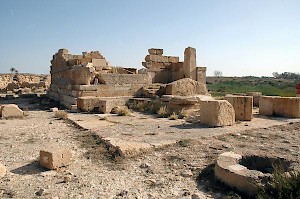
Along the southwestern shore of the port, a temple was dedicated to the Syrian god Jupiter Dolichenus. There was another temple on the shore, while a third sanctuary stood next to the signal tower. It may have been dedicated to watery deities like Neptune or Portunus, although the Capitoline triad (Jupiter, Juno, Minerva) has been proposed as well. Visitors arriving in the Port of Lepcis, could proceed to the center of the city along the Colonnaded Street.
